Premium Only Content
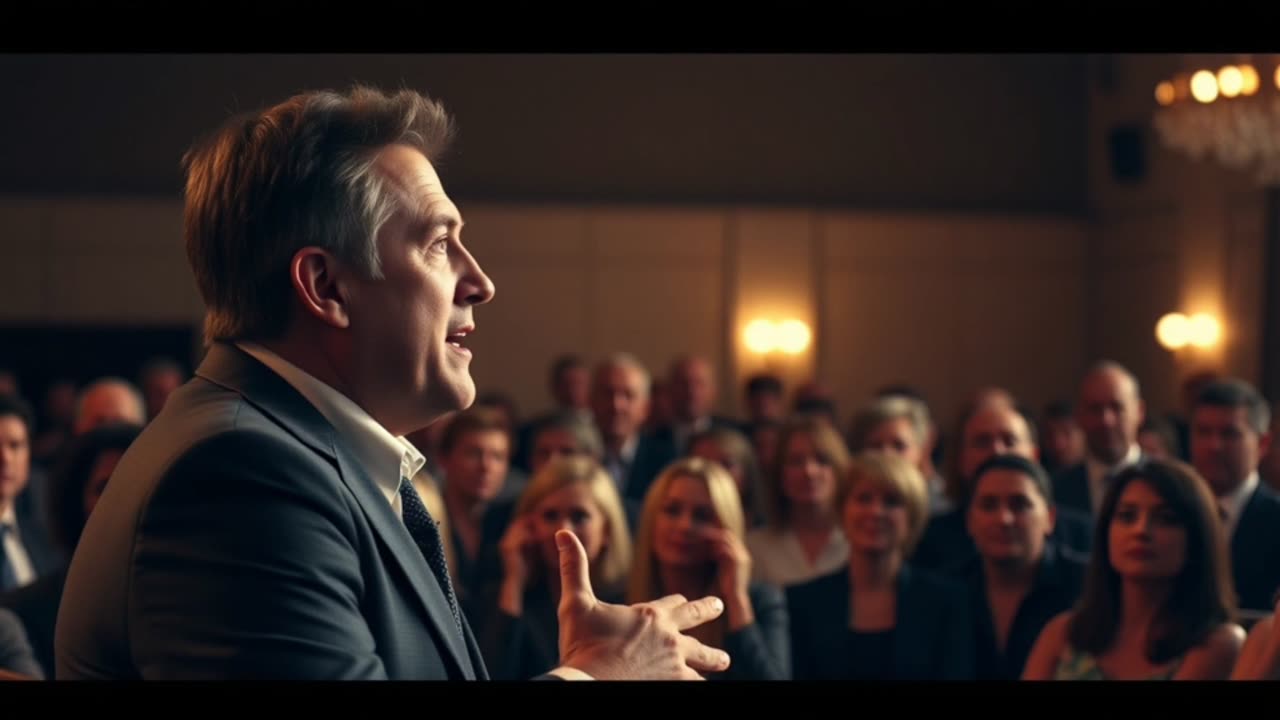
Charlie Kirk, man of God
Kirk never told people what to think. He didn't ask people to join GOP. He didn't care about that. He wanted listeners to be informed. Let them decide what they want, based on facts.
"Take up the truth, y’all, let your voice be heard, Stand tall for freedom, spread Kirk’s fearless word. Face the storm with courage, don’t you ever bend, Speak the facts, keep fightin’, till the world’s on the mend."
https://suno.com/s/YNGTe539O3rdixRF
(Verse 1)
I was born in the heartland, where the prairies meet the sky,
With a fire in my soul, and a truth that won’t die.
Loved my God up above, with a faith strong and true,
My wife and my children, they’re my anchor, my crew.
(Chorus)
Oh, Charlie Kirk, singin’ the blues,
Fightin’ for freedom, with nothin’ to lose.
In the halls of the angry, where the shouts never end,
I stood with my facts, and I’d do it again.
(Verse 2)
I walked them college roads, where the crowds would scream and yell,
Debatin’ in the fire, where the strident censors dwell.
With a table and a sign, I’d call ‘em out to fight,
Used facts and steady reason, to cut through the dark of night.
(Chorus)
Oh, Charlie Kirk, singin’ the blues,
Fightin’ for freedom, with nothin’ to lose.
Against the mob’s loud roar, I’d stand and never bend,
My arguments my shield, till the bitter end.
(Verse 3)
They called me names like “Nazi,” said I’m hatin’ through and through,
But I never held them views, never struck a blow, it’s true.
They claimed I’m GOP, just a pawn for their game,
But I stood for God and freedom, and I’d do it all the same.
(Chorus)
Oh, Charlie Kirk, singin’ the blues,
Fightin’ for freedom, with nothin’ to lose.
In the face of their slander, I’d rise and take my stand,
With truth as my weapon, in this troubled land.
(Verse 4)
I faced the ones who shouted, pushin’ ignorance and strife,
Met their rage with reason, tryin’ to spark a better life.
No fist I ever raised, no hate within my heart,
Just words to wake the sleepers, to give this world a start.
(Chorus)
Oh, Charlie Kirk, singin’ the blues,
Fightin’ for freedom, with nothin’ to lose.
In the dust of the struggle, where the truth’s hard to find,
I laid down my challenge, said, “Come change my mind.”
(Outro)
Now I’m gone from this valley, but my voice still rings out clear,
For God, my love, and freedom, I fought without no fear.
So take your lies and anger, and your chains that bind,
Truth’s the only answer—come on, change my mind.
To capture the essence of a 1930s Depression-era blues song for "Charlie Kirk Blues," the arrangement should evoke the raw, soulful, and melancholic sound of that period, while aligning with the song’s themes of struggle and defiance. Below are recommendations for tempo, rhythm, instruments, and overall style to create an authentic sound:
Tempo
Tempo: Moderate, around 70-80 BPM (beats per minute). This slow-to-mid tempo reflects the somber, reflective mood of 1930s blues, allowing the lyrics to carry weight and emotion. It should feel unhurried, like a weary traveler telling a story, but with enough drive to convey Kirk’s tenacity.
Rhythm
Rhythm: A steady, shuffle blues rhythm, typical of Delta or Chicago blues from the era. Use a 12/8 time signature or a swung 4/4 to give it that loping, heartfelt feel. The rhythm should have a slight drag, mimicking the weight of hardship, with a subtle swing to keep it moving forward.
Feel: Emphasize a call-and-response structure, where the vocal lines are answered by instrumental phrases (e.g., a guitar lick or harmonica wail). This mirrors the conversational style of Kirk’s debates and the blues tradition of storytelling.
Accents: Light syncopation on the backbeat (beats 2 and 4), with the snare or guitar strums adding a touch of defiance to match the song’s tone of standing firm.
Instruments
The instrumentation should be sparse and gritty, reflecting the resource-scarce Depression era and the raw emotion of blues music. Here’s a suggested ensemble:
Acoustic Guitar:Role: The backbone of the song, providing both rhythm and melody. Use a steel-string acoustic guitar (e.g., a Gibson L-00 or Martin 0-18, common in the 1930s) played fingerstyle or with a slide for soulful bends.
Style: Alternate between fingerpicked chords and single-note riffs in the key of E minor or A minor (common blues keys). Incorporate open-string drones and slides to evoke Delta blues artists like Robert Johnson or Son House.
Tone: Raw and unpolished, with a slightly percussive attack to reflect the song’s intensity.
Harmonica:Role: Adds a mournful, wailing quality, perfect for responding to vocal lines in the call-and-response structure.
Style: Played in cross-harp (second position, e.g., a D harmonica for E minor) to emphasize bluesy bends and soulful cries. Think of players like Sonny Boy Williamson I.
Tone: Gritty and emotive, with occasional overblows to punctuate Kirk’s defiance in the lyrics.
Upright Bass or Washtub Bass:Role: Provides a simple, steady foundation to anchor the rhythm.
Style: Plucked in a minimalist, two-beat pattern (root-fifth or root-third), focusing on the I-IV-V chord progression typical of blues. A washtub bass, common in 1930s jug bands, could add a homemade, Depression-era feel.
Tone: Deep and resonant, but not overpowering, to keep the focus on vocals and guitar.
Percussion (Optional):Role: Minimal percussion to enhance the rhythm without overwhelming the acoustic vibe. Use a snare drum played with brushes or a washboard for a skiffle-like texture.
Style: Light, understated beats, focusing on the shuffle rhythm. Avoid heavy kicks or cymbals to maintain the stripped-down 1930s aesthetic.
Tone: Dry and crisp, with a slightly loose feel to evoke the era’s informal recordings.
Vocals:Role: The heart of the song, delivering Kirk’s story with raw emotion.
Style: Sung with a gravelly, expressive tone, inspired by bluesmen like Lead Belly or Blind Lemon Jefferson. The vocalist should alternate between mournful delivery in the verses and a defiant, preacher-like cadence in the chorus and outro to reflect Kirk’s fiery debate style.
Dynamics: Start soft and introspective, building to a stronger, more assertive delivery in the outro, especially on the “Change my mind” line.
Arrangement Notes
Structure: Follow the song’s structure (Verse-Chorus-Verse-Chorus-Verse-Chorus-Verse-Chorus-Outro). Each verse should start with a solo guitar or harmonica intro, with the bass and percussion (if used) joining on the second line. The chorus can build slightly with fuller chords and harmonica fills.
Key: E minor for a dark, soulful tone, or A minor for a slightly brighter but still gritty feel. Use a standard I-IV-V blues progression (e.g., Em-Am-B7 in E minor).
Dynamics: Keep the verses sparse to highlight the lyrics, with the guitar and vocals carrying the weight. The chorus can swell slightly with harmonica and bass for emphasis. The outro should peak with a bold vocal delivery and a final guitar slide or harmonica wail on “Change my mind.”
Authenticity: Avoid modern effects like reverb or distortion. Use minimal amplification, as 1930s blues was often recorded acoustically or with basic microphones, capturing the room’s natural sound.
Performance Tips
Mood: The song should feel like a lament for Kirk’s struggles but also a defiant stand for his beliefs. The performer should channel the exhaustion of the Depression era while conveying Kirk’s unyielding spirit.
Setting: Imagine performing in a dusty juke joint or on a street corner, with a small, attentive crowd. The rawness of the setting should come through in the delivery.
Outro Emphasis: The final line, “Truth’s the only answer—come on, change my mind,” should be delivered with a bold, almost confrontational tone, mimicking Kirk’s debate style. Pause briefly before “change my mind” for dramatic effect, followed by a lingering guitar or harmonica note.
Example Inspirations
Listen to Robert Johnson’s “Cross Road Blues” for the guitar’s raw intensity and vocal phrasing.
Study Son House’s “Death Letter” for slide guitar techniques and emotional delivery.
Check Lead Belly’s “Goodnight, Irene” for simple yet powerful storytelling in a blues-folk style.
For harmonica, reference Sonny Boy Williamson I’s “Good Morning, School Girl” for soulful, conversational fills.
This setup ensures the song feels authentic to the 1930s Depression-era blues while capturing Charlie Kirk’s combative yet principled persona. The sparse instrumentation and steady shuffle rhythm will let the lyrics shine, with the final “Change my mind” delivering a provocative punch.
-
 2:48
2:48
Current Affairs and world politics
18 days agoPicking Cotton 2 (update)
42 -
 47:31
47:31
Watchmen Action: Ezekiel 33:6 - Equip The Church To Engage The Culture
3 hours agoThe Watchmen Brief LIVE From AmFest2025!
12.4K1 -
 1:00:45
1:00:45
Graham Allen
3 hours agoLive From AMFEST 2025: Day 2
34.5K36 -
 LIVE
LIVE
LFA TV
10 hours agoLIVE & BREAKING NEWS! | FRIDAY 12/19/25
2,208 watching -
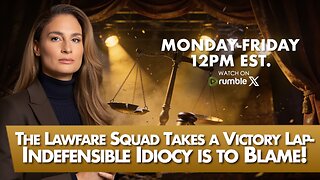 LIVE
LIVE
The Mel K Show
2 hours agoMORNINGS WITH MEL K-The Lawfare Squad Takes a Victory Lap-Indefensible Idiocy is to Blame! 12-19-25
736 watching -
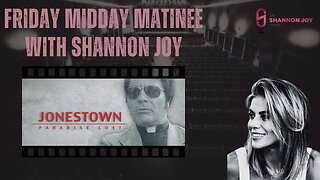 LIVE
LIVE
The Shannon Joy Show
3 hours ago🔥SJ LIVE Dec 19 - Friday Midday Matinee W/Shannon Joy! Featuring "American Experience: Jonestown"🔥
29 watching -
 1:02:48
1:02:48
Trumpet Daily
1 hour agoTrumpet Daily LIVE | Dec. 19, 2025
9.52K3 -
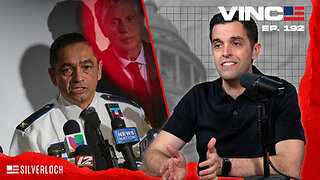 1:01:55
1:01:55
VINCE
4 hours agoIs This Why They Were Hiding The Evidence? | Episode 192 - 12/19/25 VINCE
227K219 -
 1:55:26
1:55:26
Badlands Media
9 hours agoBadlands Daily: 12/19/25
47.8K18 -
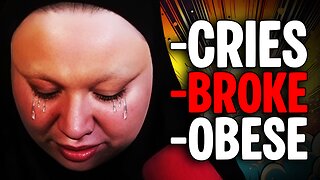 14:45
14:45
Bearing
5 hours agoFROGAN Gets BODIED 💥 Caleb Hammer, Asmongold + the $20k Rejection 💰
25.2K14